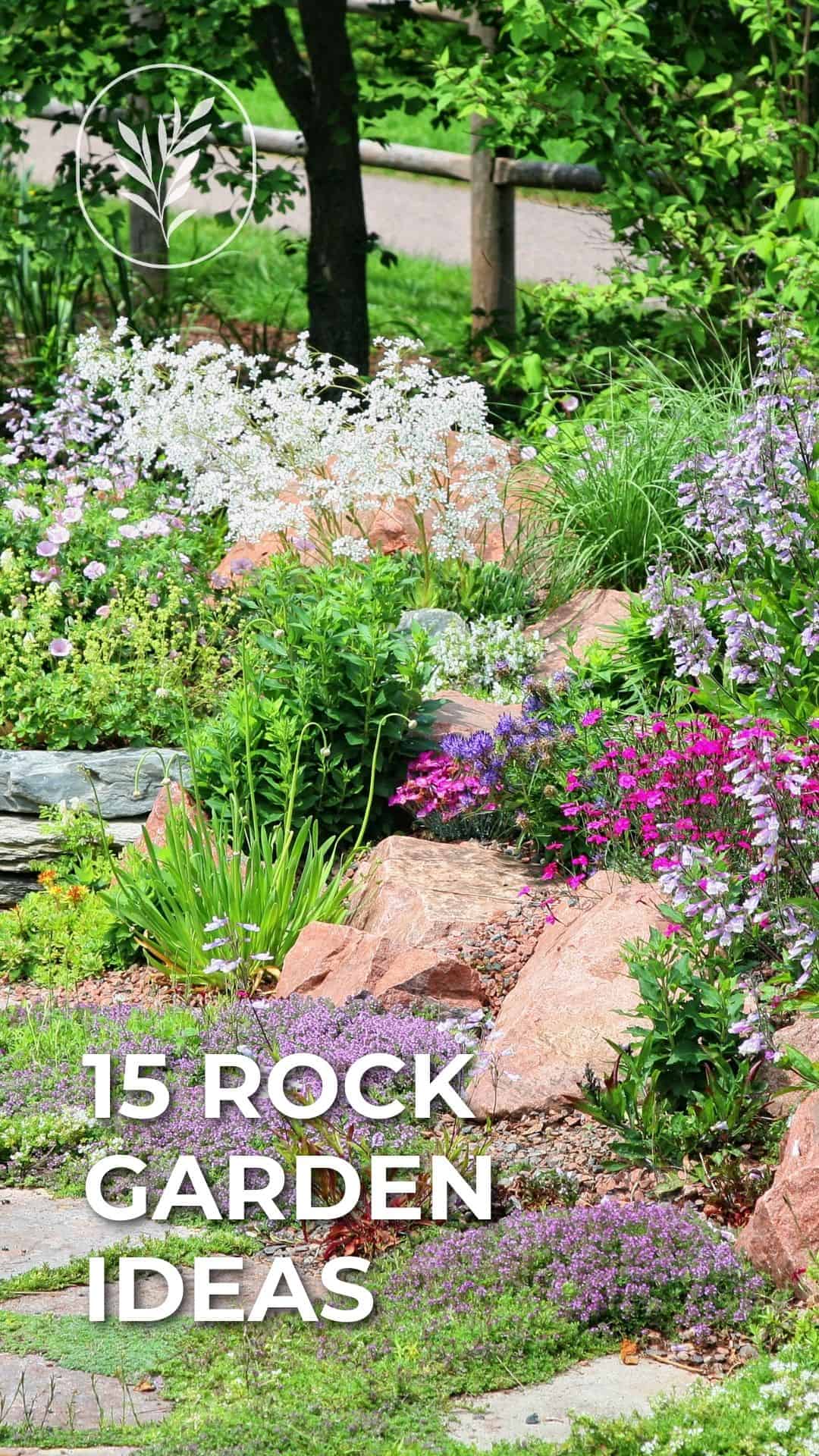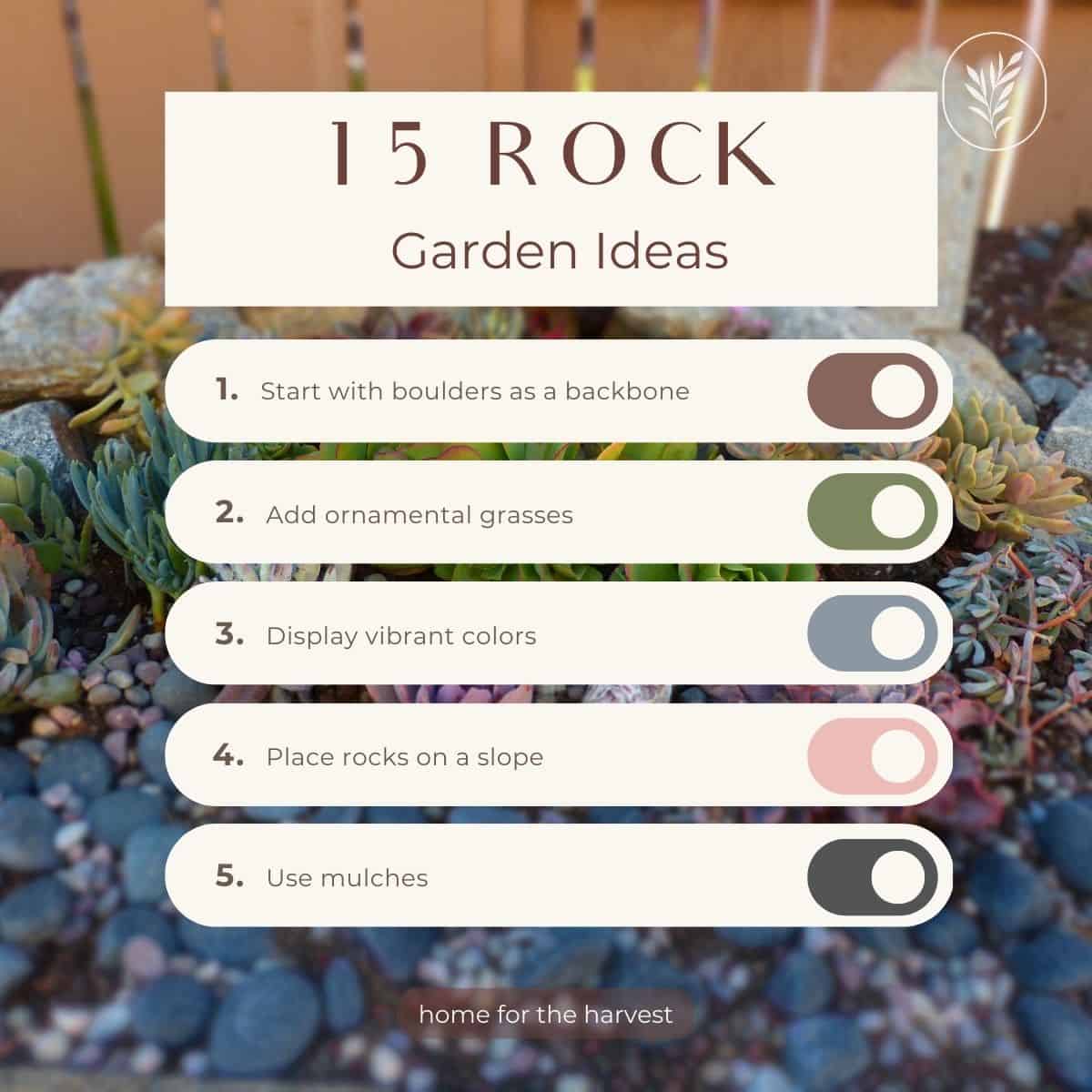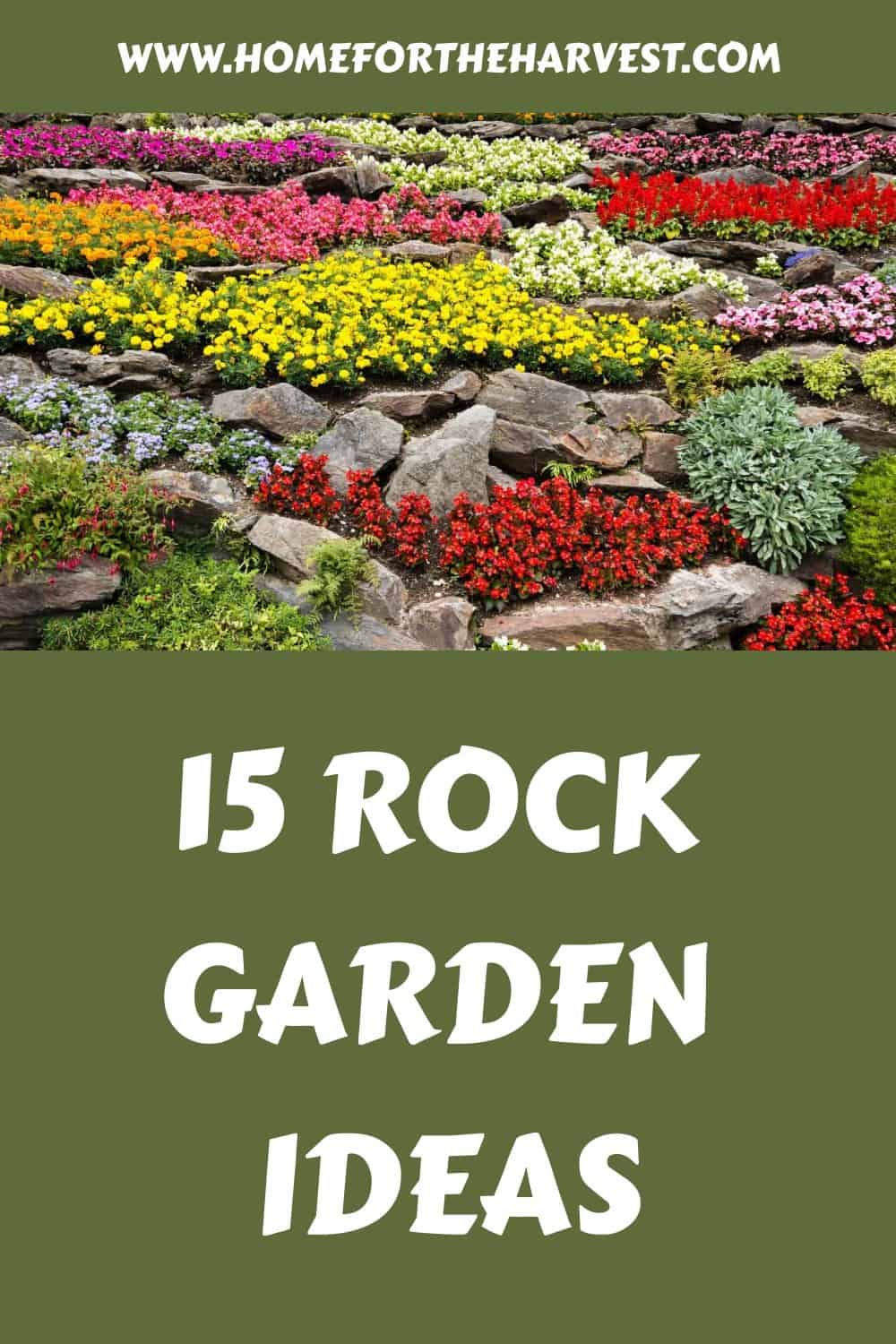Placing rocks in your garden can add a natural appearance to the blooms and greenery around them. If you aren’t sure where to start, this post will provide you with a few rock garden ideas to get you started. Whether you are using smooth pebbles or larger stones, there’s tons of inspiration!
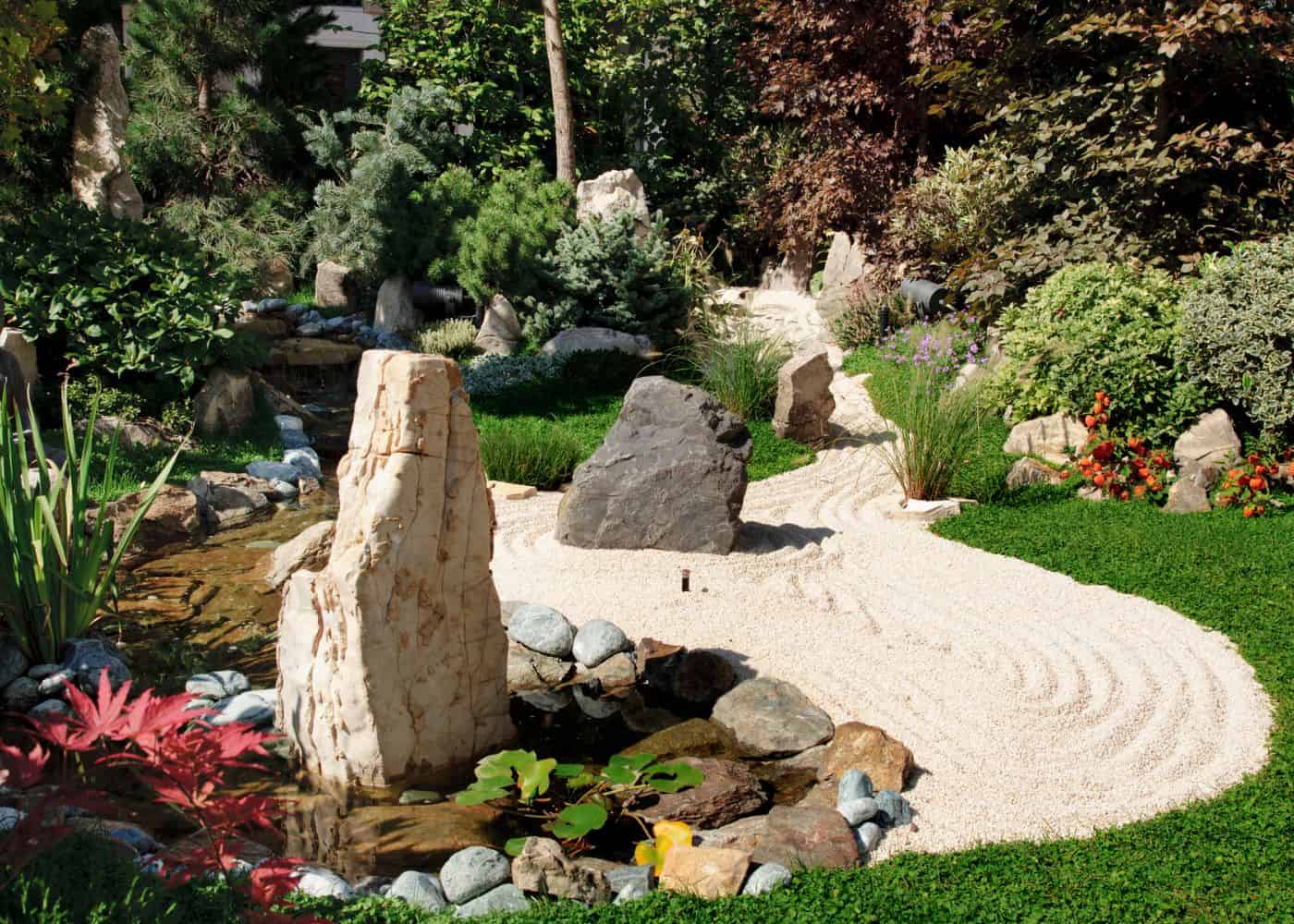
1. Start with boulders as a backbone
Placing large boulders in your garden beds will provide a dramatic visual interest. Choose from many different types of rock for a different tone based on your style preferences. Once you have your larger rocks placed, add plants of varying shapes and sizes to fill in the empty spaces. The combination of rocks and plants will provide a stunning display.
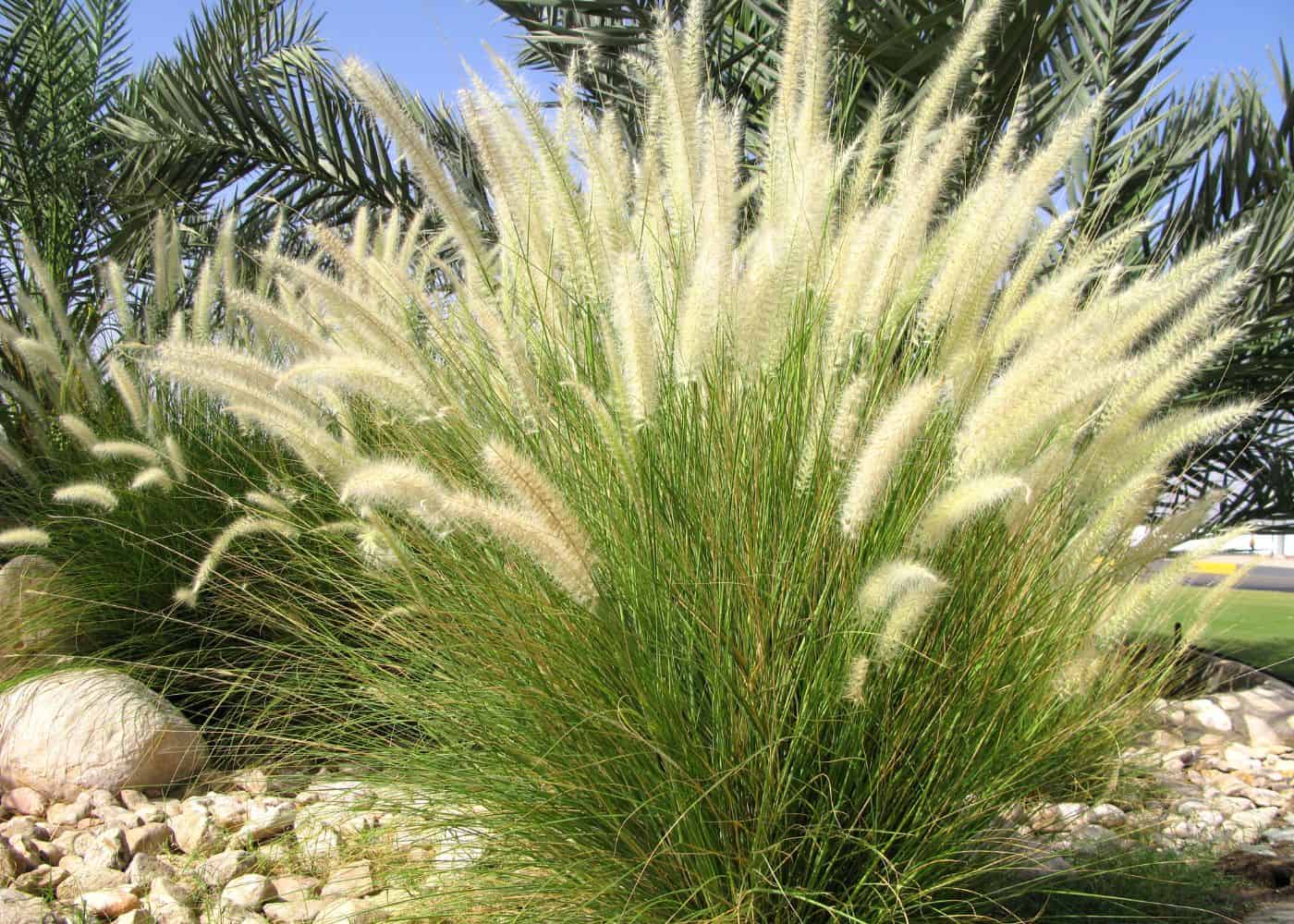
2. Add ornamental grasses to soften the look
Use ornamental grasses and shrubs to fill in spaces between rocks and to add plenty of colors to offset the grays. Adding the grass will give the space a natural look and plenty of depth. The combination of grass and rocks will give your garden a planned-by-nature look and feel.
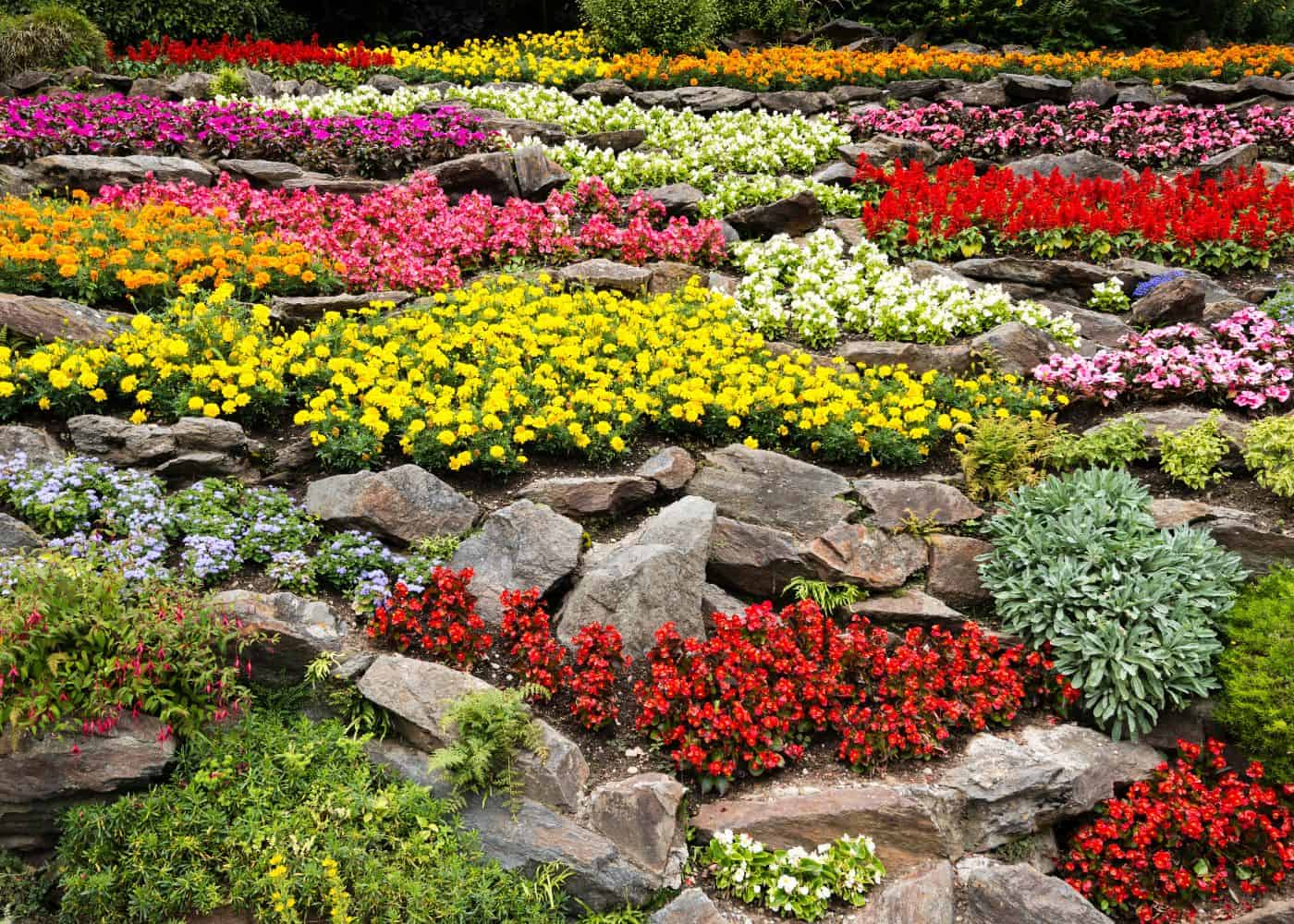
3. Display vibrant colors
Among your natural toned rocks, plant vibrant flowers and plants to bring life to your garden. Let the colors dominate the space and fill in areas where the different-sized rocks can’t reach. Black-eye Susans and other perennials are great choices for spaces like these.
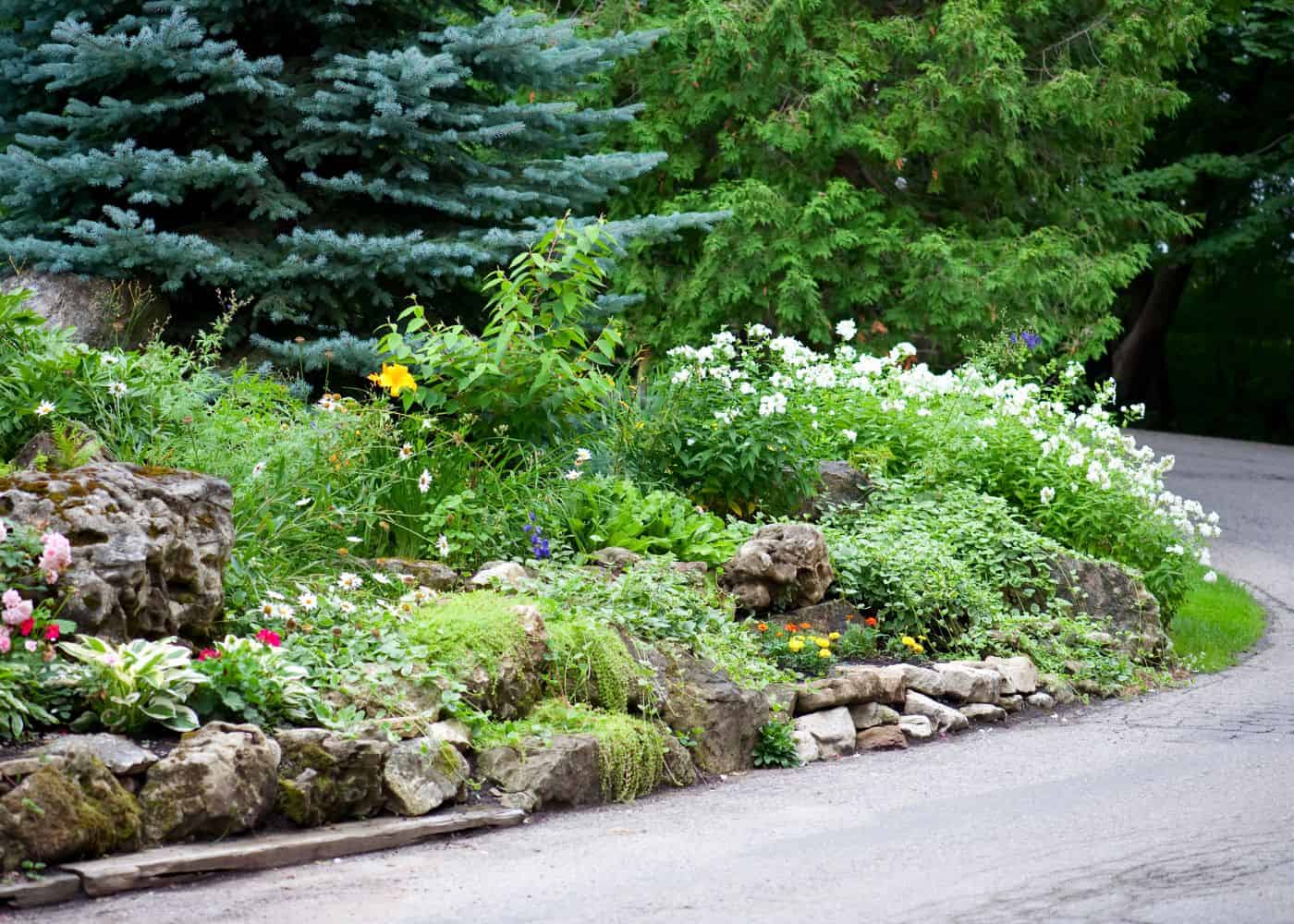
4. Place rocks on a slope
Placing your rocks on a slope can display them in a wonderful way if the slope allows. The slope will tilt the plants and greenery to the eye, making a show-stopping display. Add poppies and other pretty blooming flowers to the slope for a radical effect.
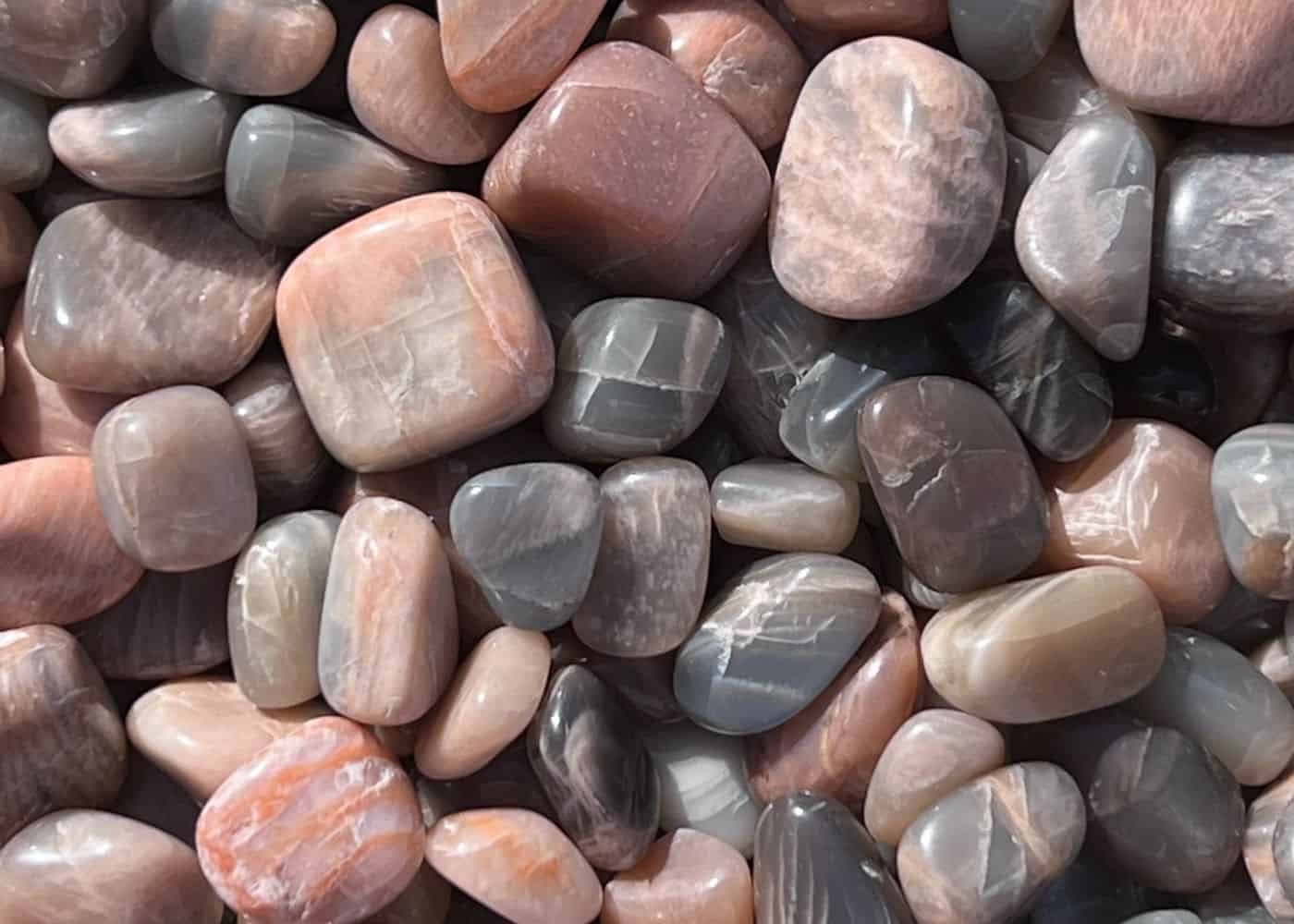
5. Use mulches (including rock mulches)
If you have a small space, try using mulch to add some texture and color. Rock mulch comes in different shapes, sizes, and colors. Tumbled glass mulch will give a succulent garden or rock garden a little bling. These whimsical gardens are in-style and are beautiful to look at. The sunlight literally bounces off the surfaces onto the larger rocks.
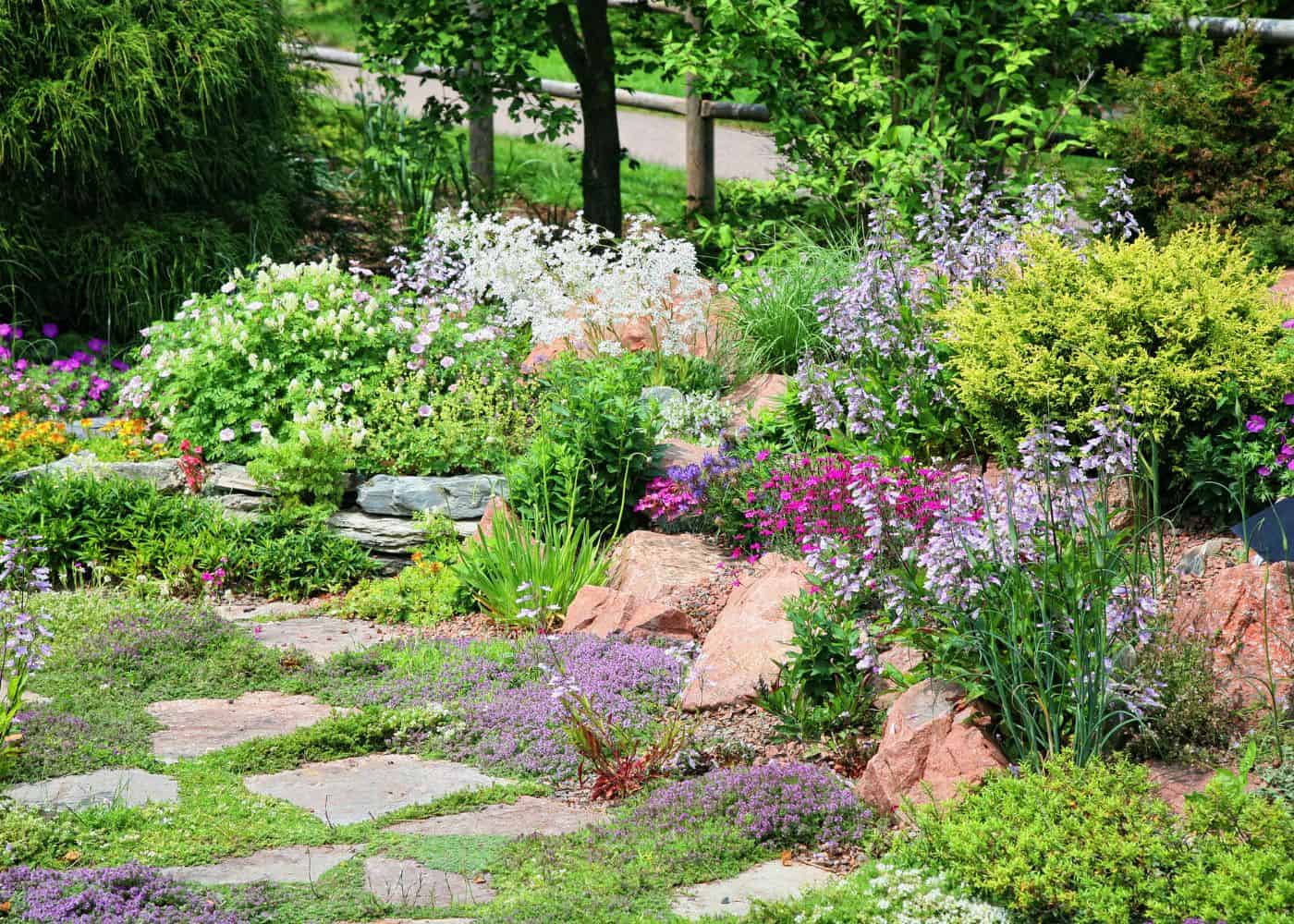
6. Use stones of varying shapes and sizes
In your rock garden, use a variety of river stones, pavers, crushed rock, pebbles, and boulders in different colors, shapes, and sizes. An arrangement of rocks surrounded by low- maintenance plants will give you a simple garden to care for.
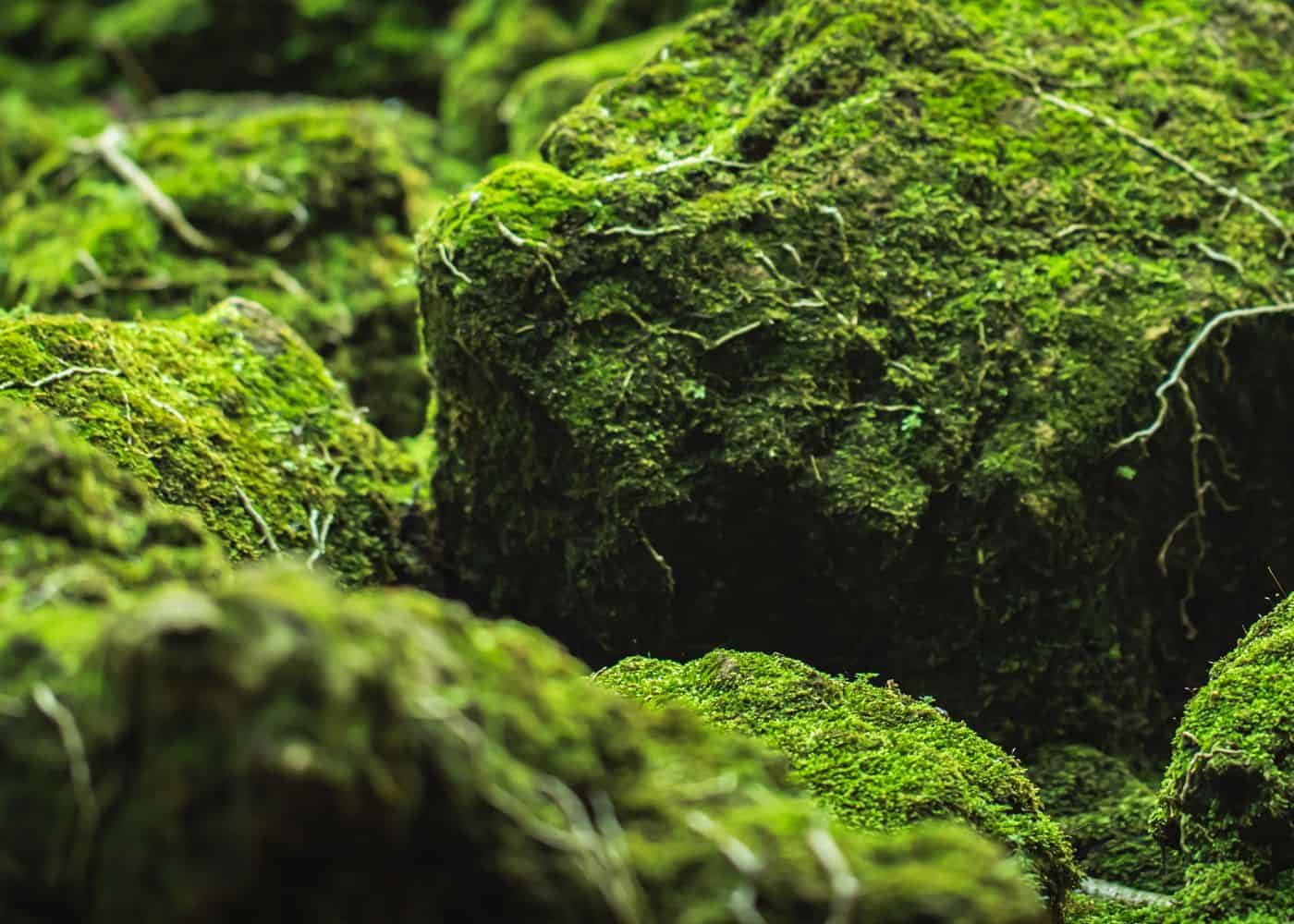
7. Add moss to the shady side
Once you have placed your different rocks, plant moss and dense grasses nearby. Let them grow around and on the rocks to create a super green landscape. Rock garden ideas like this are so easy to care for. Who doesn’t love a low-maintenance garden?
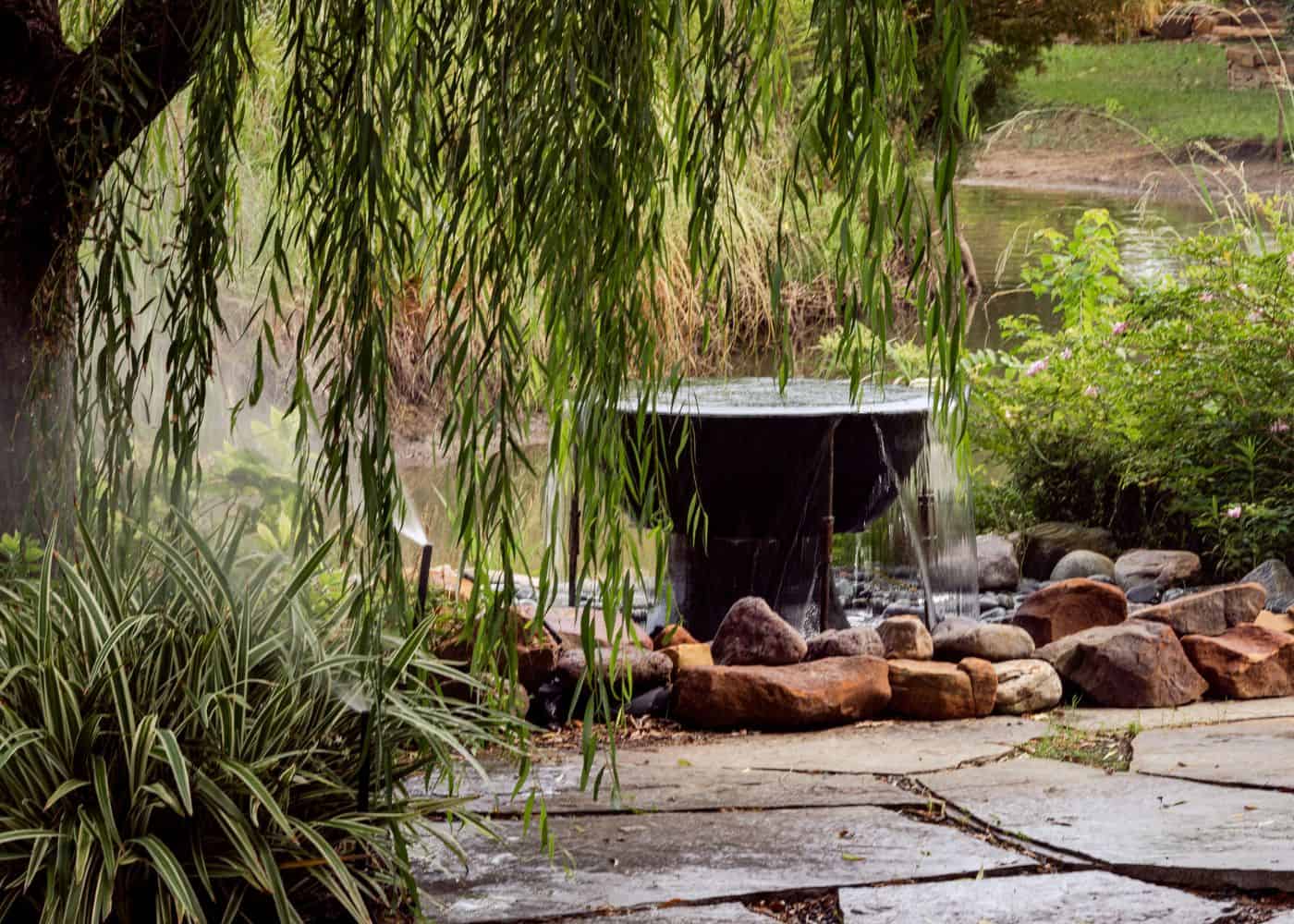
8. Go for the zen garden look
Using rocks, moss, and other native plants, create a small zen garden. The ambiance in these simple gardens creates a safe space for meditation and contemplation. Popular plants in these gardens are azaleas or Japanese maples. Succulent plants are also a nice touch mixed in with smaller rocks and stone steps.
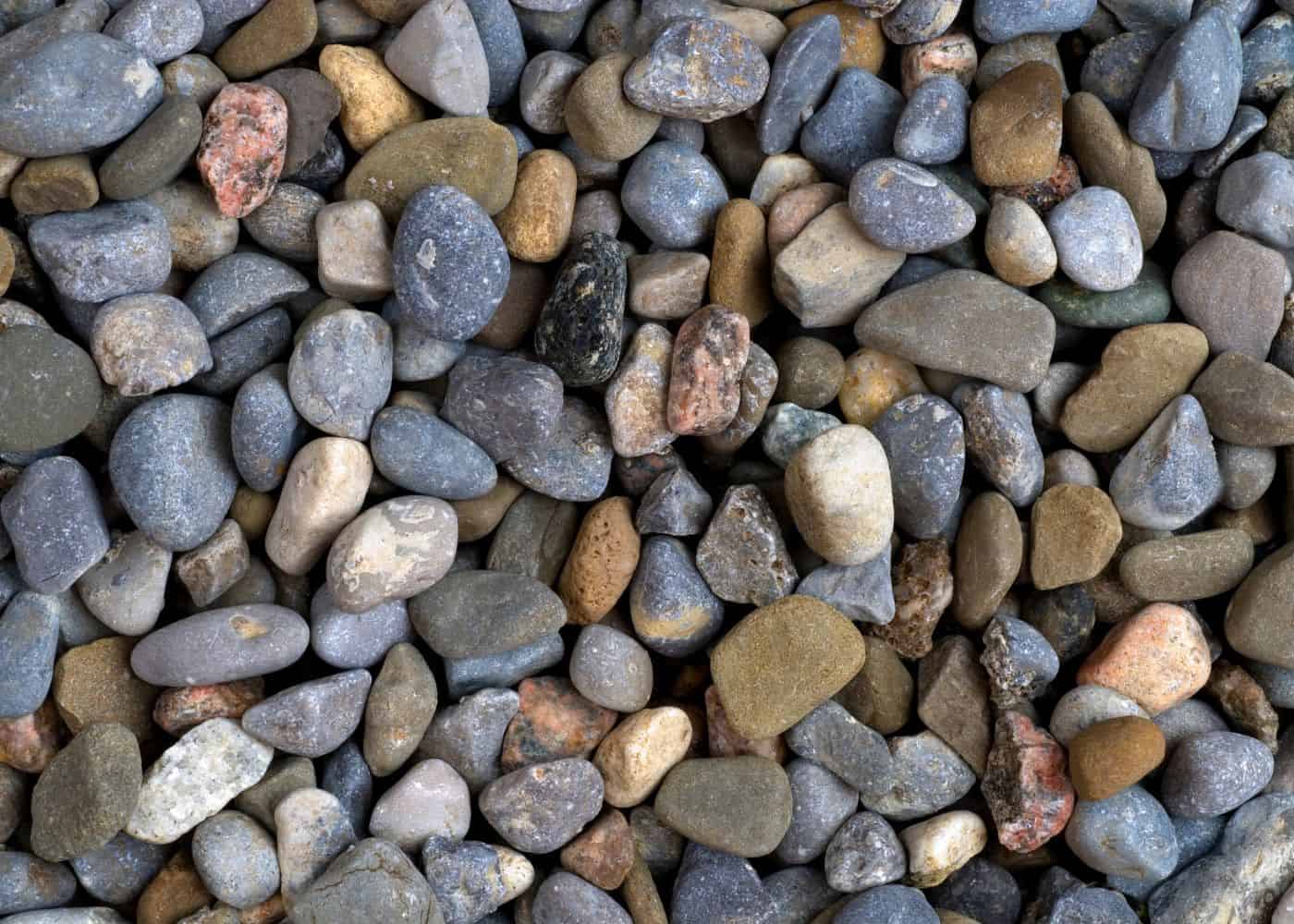
9. Add glass pebbles or pea gravel
If you want to get artsy, add some glass pebbles to the mix. You can find smooth pebbles and more jagged pieces at the local nursery. They look great with river rocks or can be placed artistically in a raised planter. Many gardeners like to pair an ocean-colored glass with pea gravel in small spaces for a nice visual appeal.
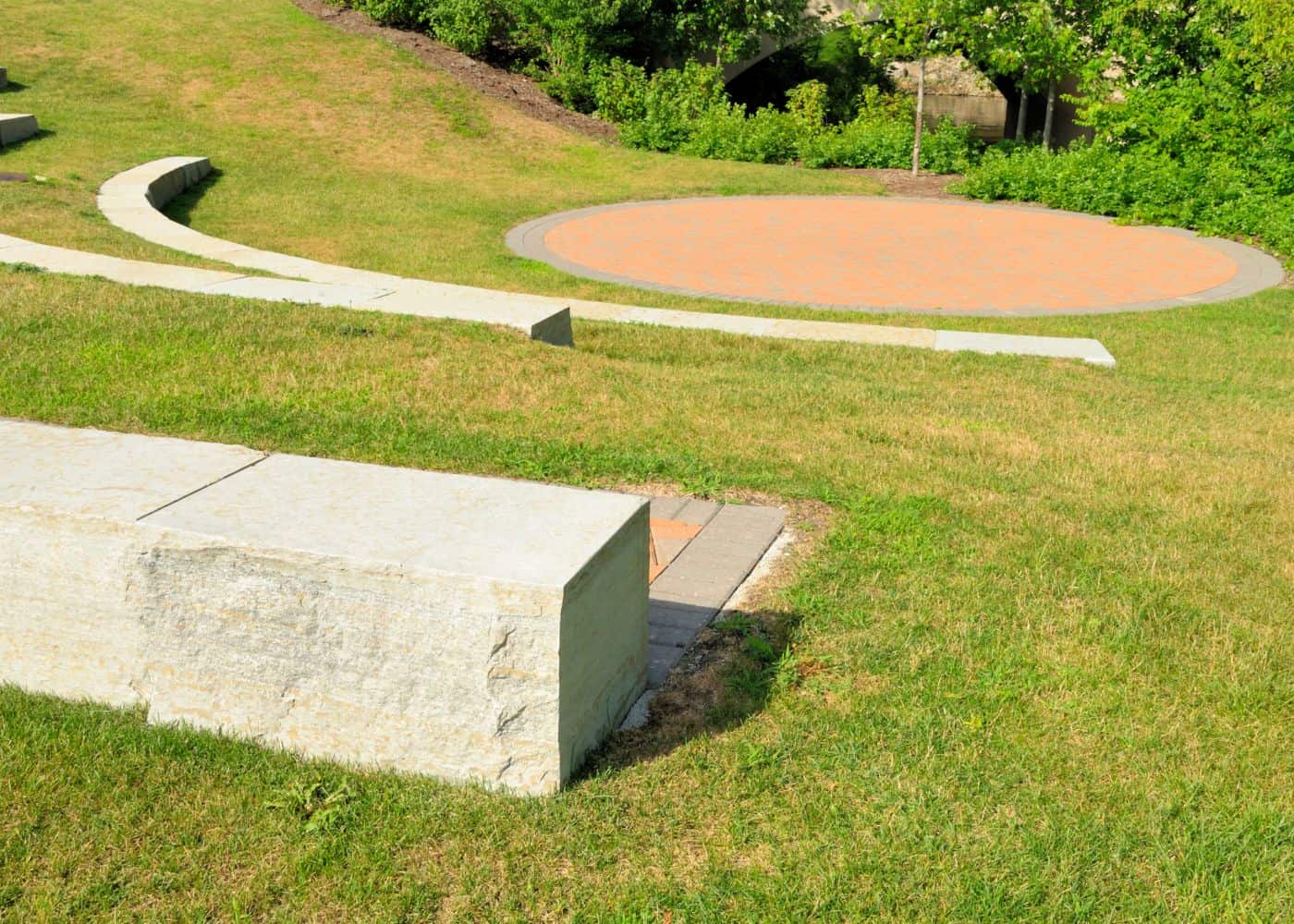
10. Create a mini amphitheater
Using large stones and paving stones, create a tiered amphitheater effect. Fill in each “step” with smaller pebbles and choose plants that will grow nicely among the pebbles. Some of these plants include mugo pines or barberry bushes. Incorporating elements like this in your rock garden will give the space a nice feel.
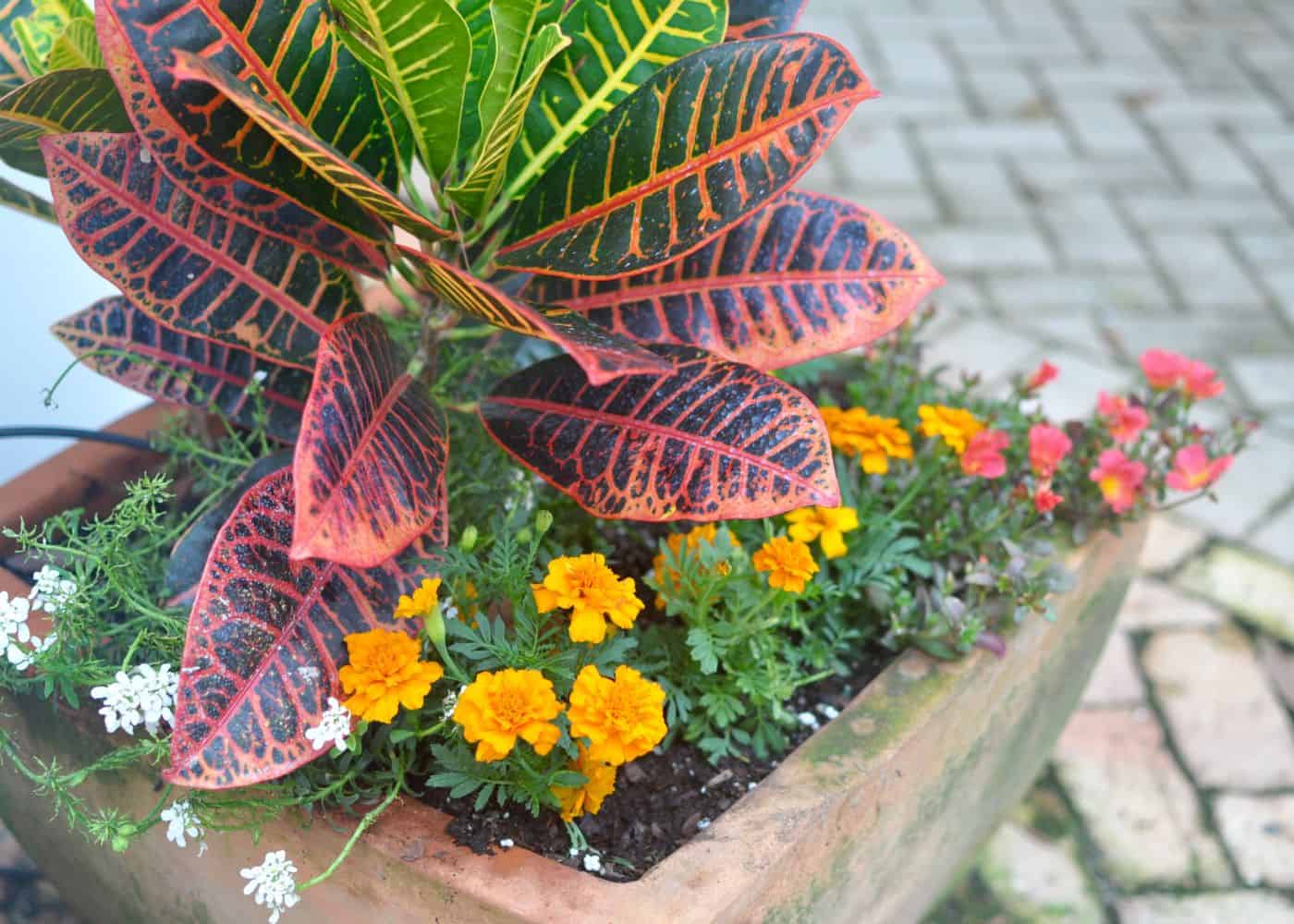
11. Use planters and low containers
As you create your rock garden, use low, wide containers to display certain plants. Throughout the year, replace them to change up the colors or to add different heights to your garden. These planters are great for annuals that you can change out each season.
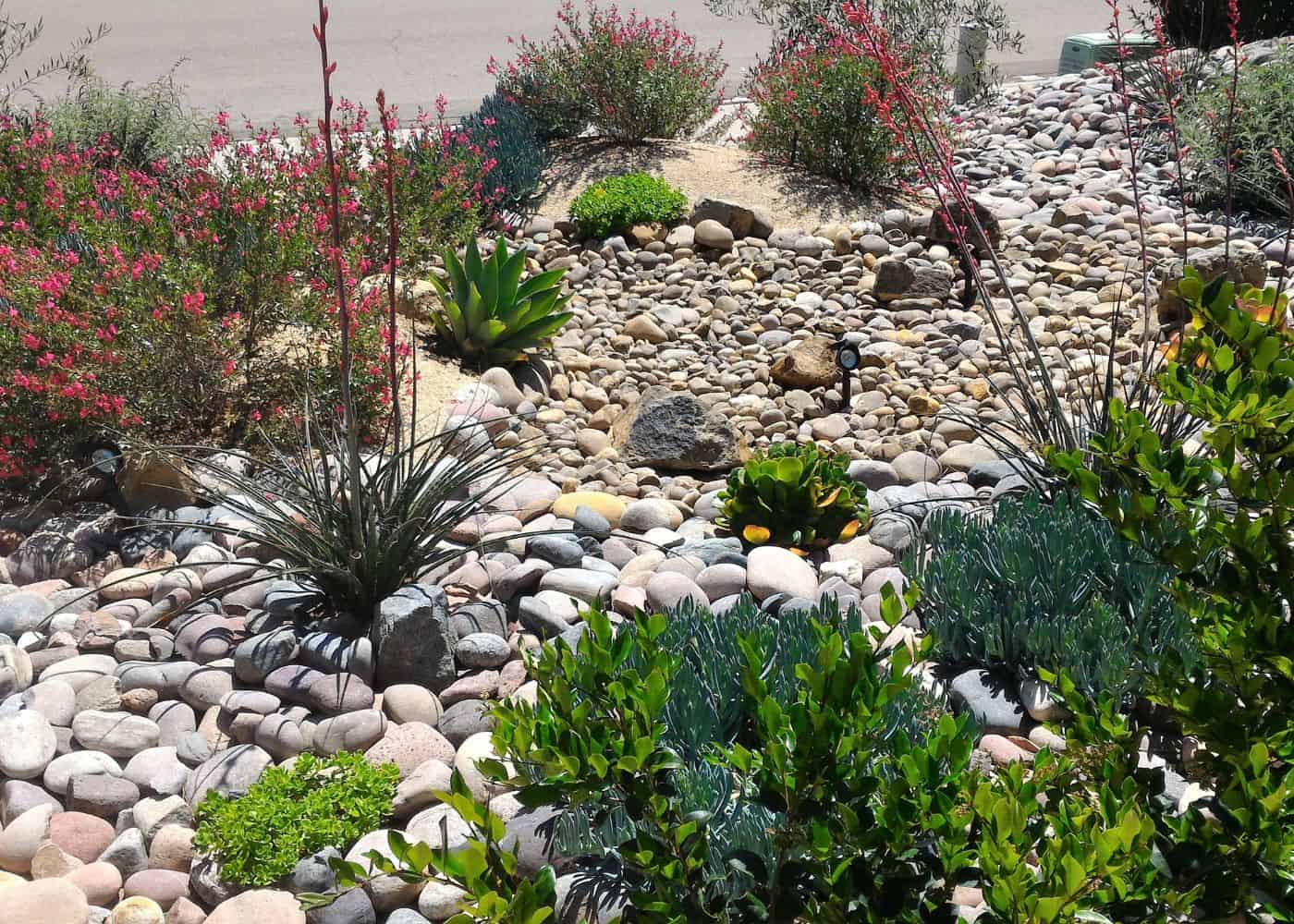
12. Install a stream or dry creek bed
It makes sense that a stream should be flowing in your rock garden. Use New Mexico boulders of varying shapes and sizes to create your own waterfall effect among cascading plants. Place smaller stones in the gaps and a pond at the base of the stream or waterfall. A water feature like this will add a lovely presence to your rock wall.
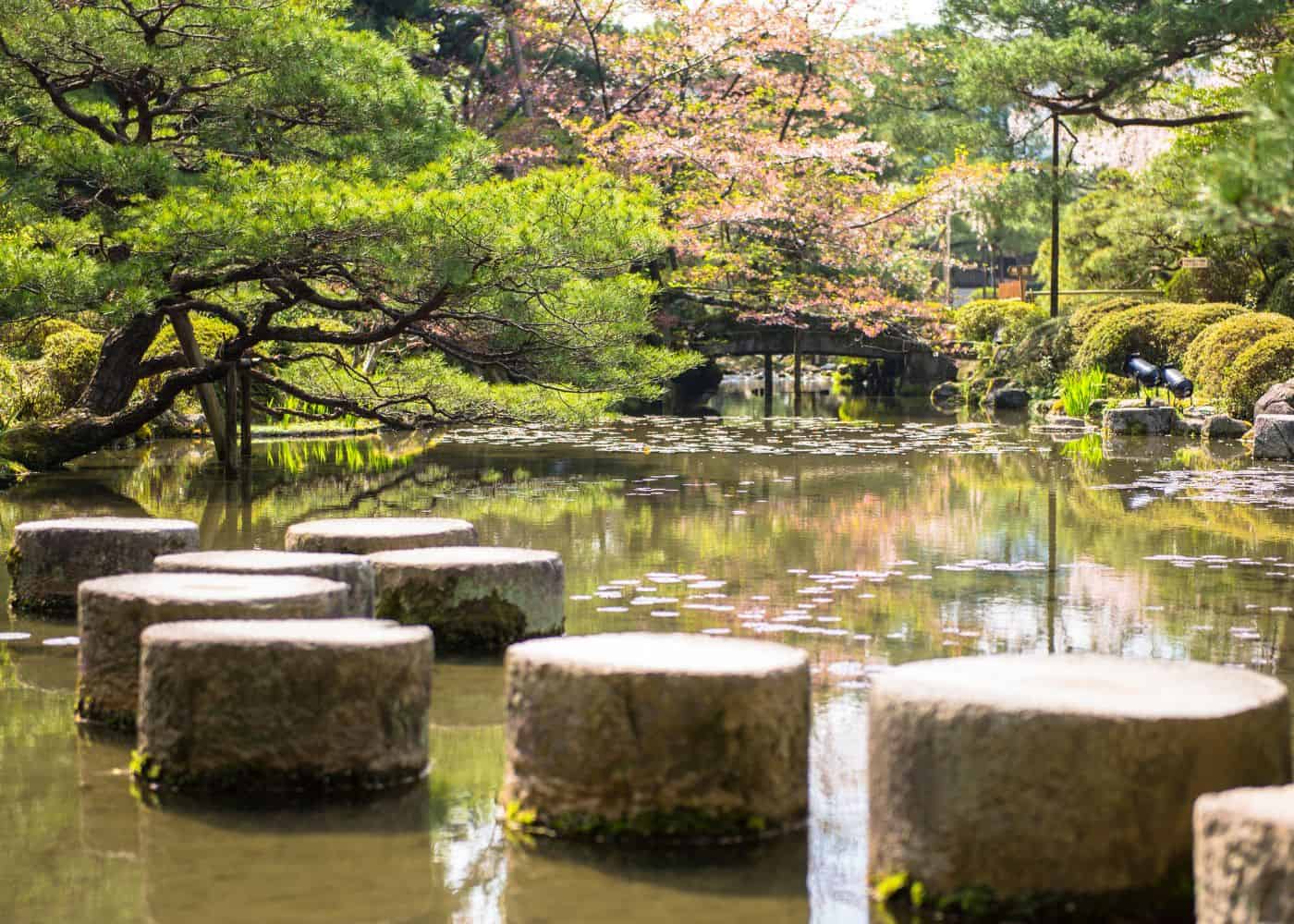
13. Add stepping stones to create a path
Use stepping stones throughout your garden for a nice path to walk and enjoy. Plant drought tolerant plants among small stones and larger pavers to walk on. Some great rock garden plants are succulents, tall grasses, and lamb’s ear. They will look great along a lined path of stones.
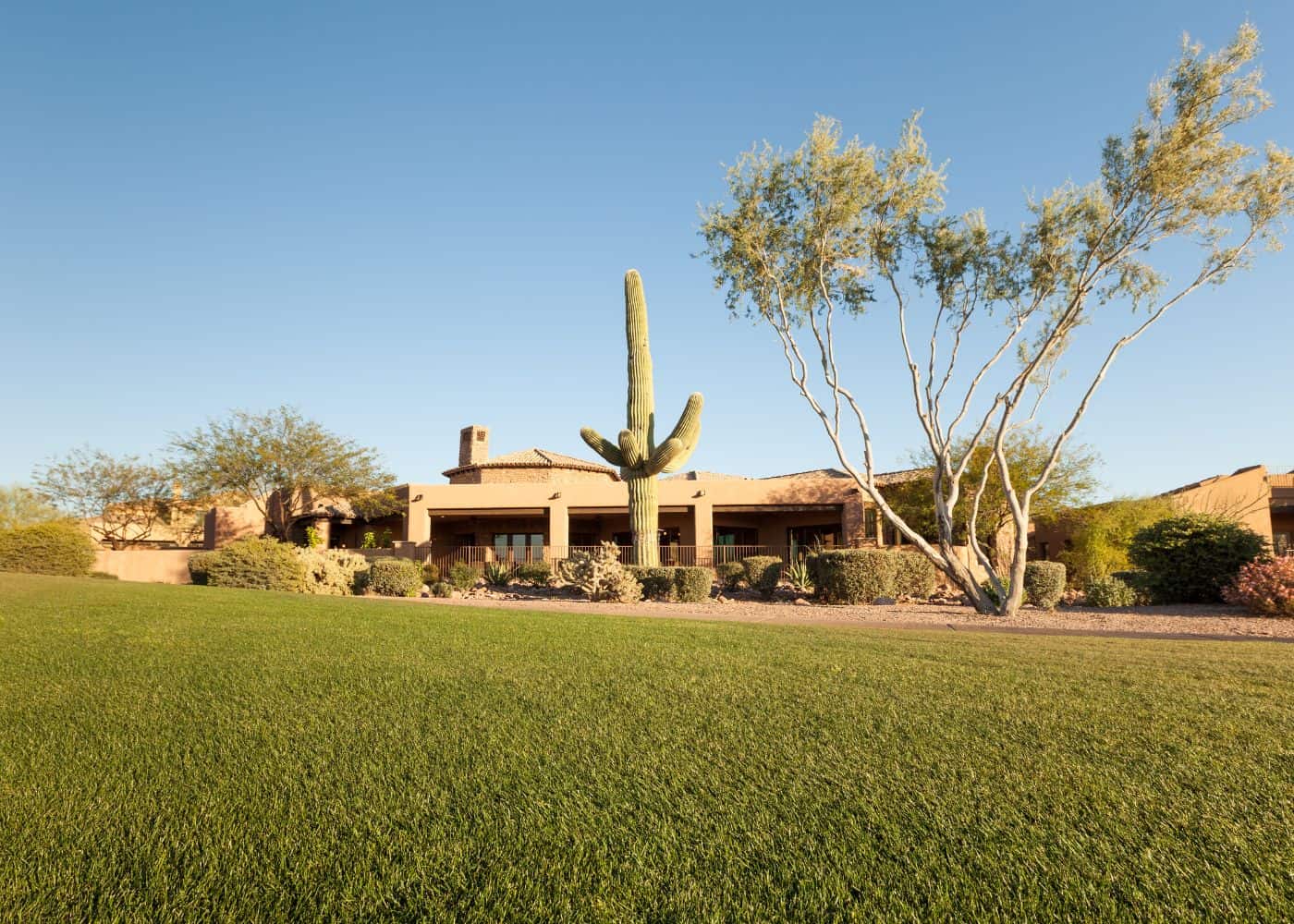
14. Draw inspiration from the desert
Use Santa Fe as inspiration for your rock garden ideas. Use small pebbles along a path of big boulders and pavers. Instead of random groupings, place the rocks to look like a wall and place plants behind them. Plant succulents and taller plants that prefer warm and dry climates, and add a water feature if you have the space.
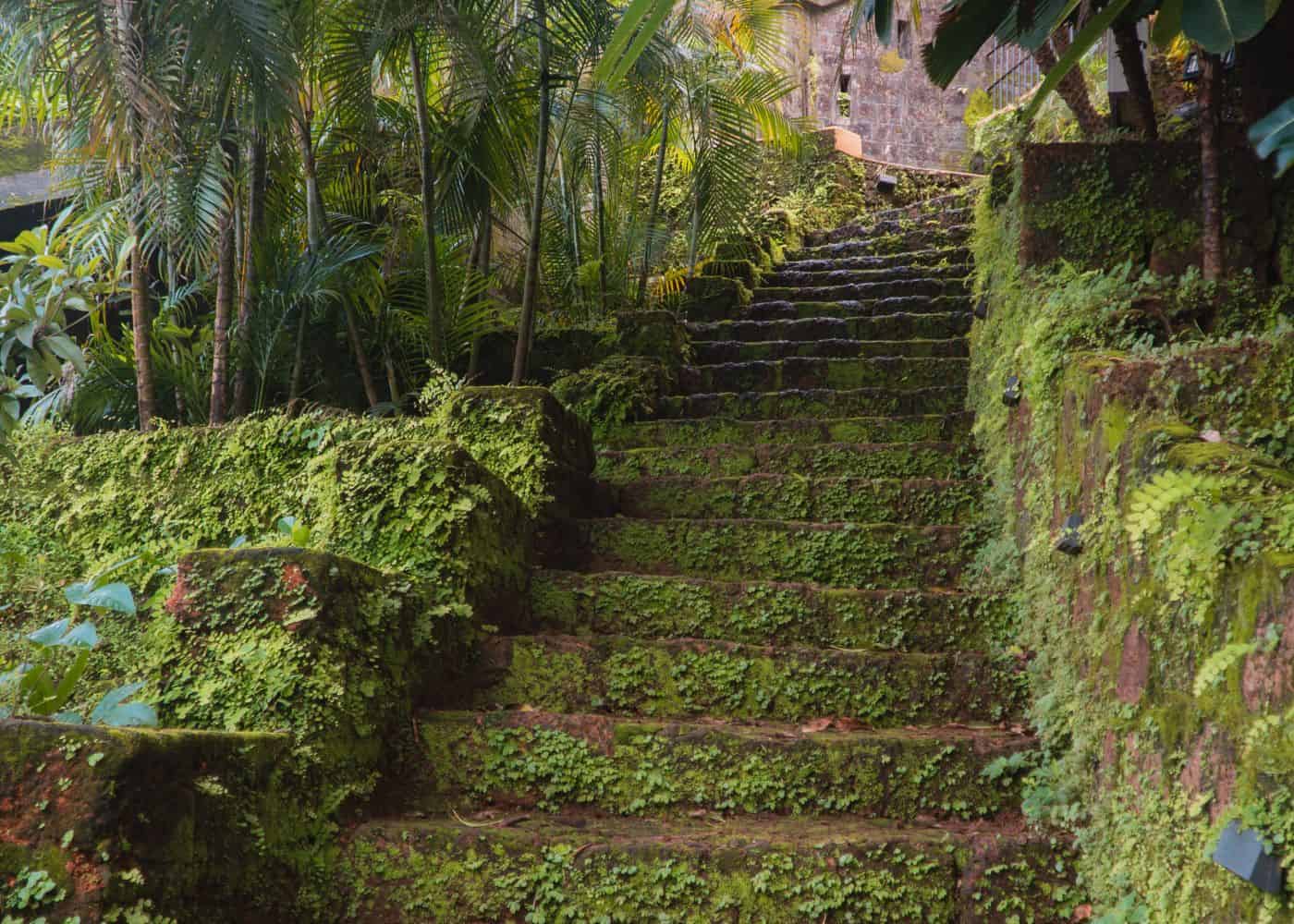
15. Build a stone stairway
Replicate a set of stairs through your garden using large stone steps. Plant ornamental grasses on the slope of your rock garden design, as well as alpine plants and colorful blooms. Place the stones in a way that provides a natural appearance, and have fun with them. Guests will love wandering through your garden using strategically placed stones.
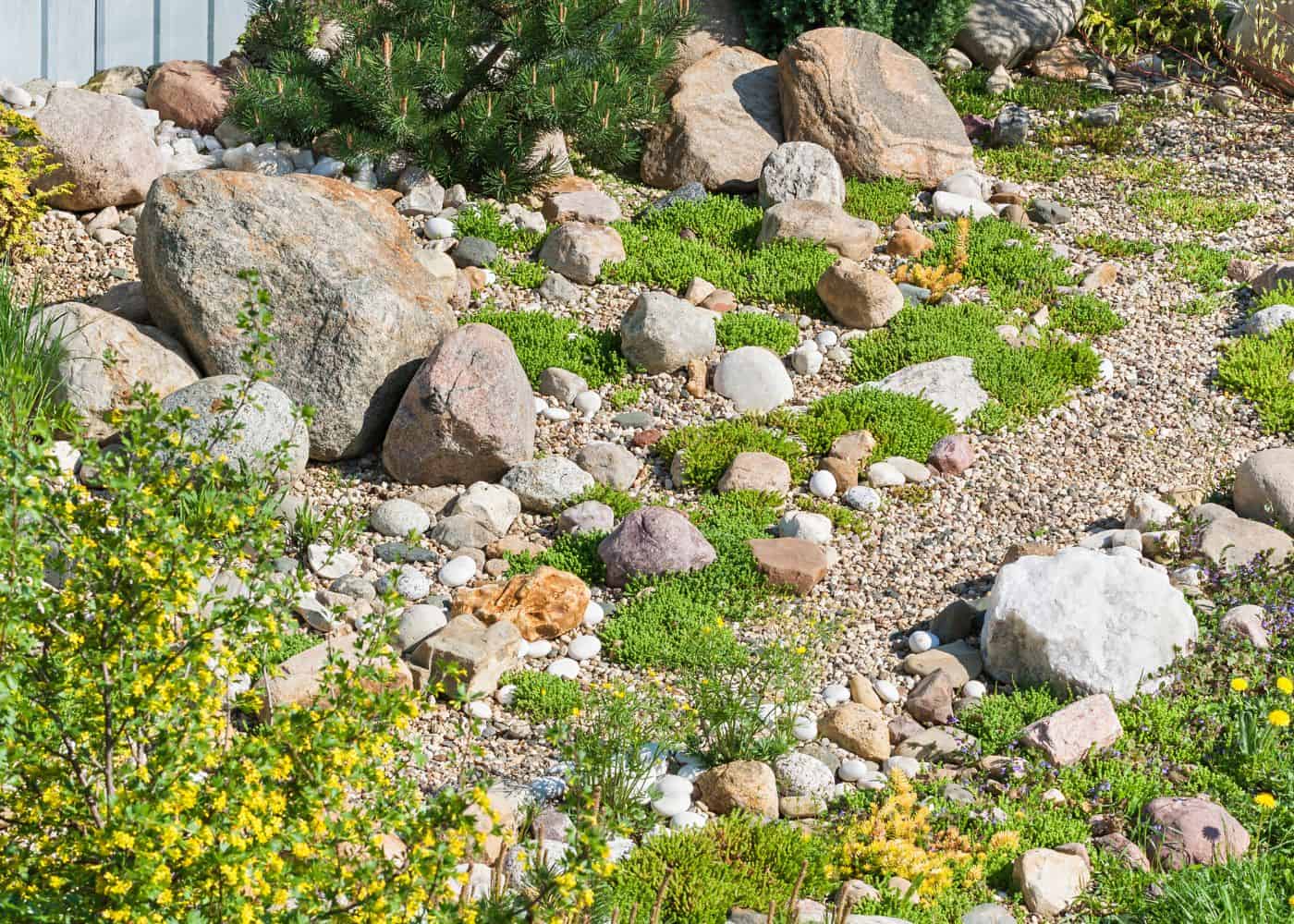
FAQs about rock gardens
How do I design a rock garden?
To design a rock garden, first consider the size and layout of your space. Think about the scale of the rocks and plants you will use, and try to create a balanced composition. Consider incorporating slopes and levels to add visual interest. Choose plants that are well-suited to the growing conditions in your area, such as sun exposure and soil type. Use a variety of rock sizes and shapes to add texture and interest.
What types of plants are suitable for a rock garden?
Rock gardens in the sun are typically planted with drought-tolerant and low-maintenance plants that can thrive in well-draining soil and full sun. Suitable plants for rock gardens include succulents, alpine plants, and small perennials. Consider using plants with attractive foliage or flowers, and choose plants that will stay small and compact to fit the scale of the rock garden.
Rock gardens in the shade are more likely to be planted in a mossy, zen style. They often include a water feature and are more likely to be planted with lush greenery like hostas, ferns, and pachysandra.
How do I care for the plants in my rock garden?
To care for the plants in your rock garden, make sure they are planted in well-draining soil and placed in an area with adequate sun exposure. Water the plants regularly, but allow the soil to dry out between watering to prevent overwatering.
Fertilize the plants with a balanced, slow-release fertilizer according to the manufacturer’s instructions. Prune the plants as needed to maintain their shape and size.
Can I use any type of rock for my rock garden?
It is important to choose rocks that are suitable for the size and scale of your rock garden. Larger rocks can be used as anchors, while smaller rocks can be used to fill in gaps and add texture (like as mulch).
It is also important to choose rocks that are appropriate for the climate and soil conditions in your area. Some types of rocks, such as limestone, can be prone to weathering, can make soil more alkaline, and may not be suitable for all climates (or for acid-loving plants).
How do I incorporate water features into my rock garden?
Water features can add visual interest and a soothing sound to a rock garden. There are many options for incorporating water into a rock garden, including small fountains, waterfalls, and streams.
Consider the size and scale of your rock garden when choosing a water feature, and make sure the feature is placed in a location easily accessible for maintenance. Be sure to follow local regulations or guidelines for installing a water feature in your garden.


